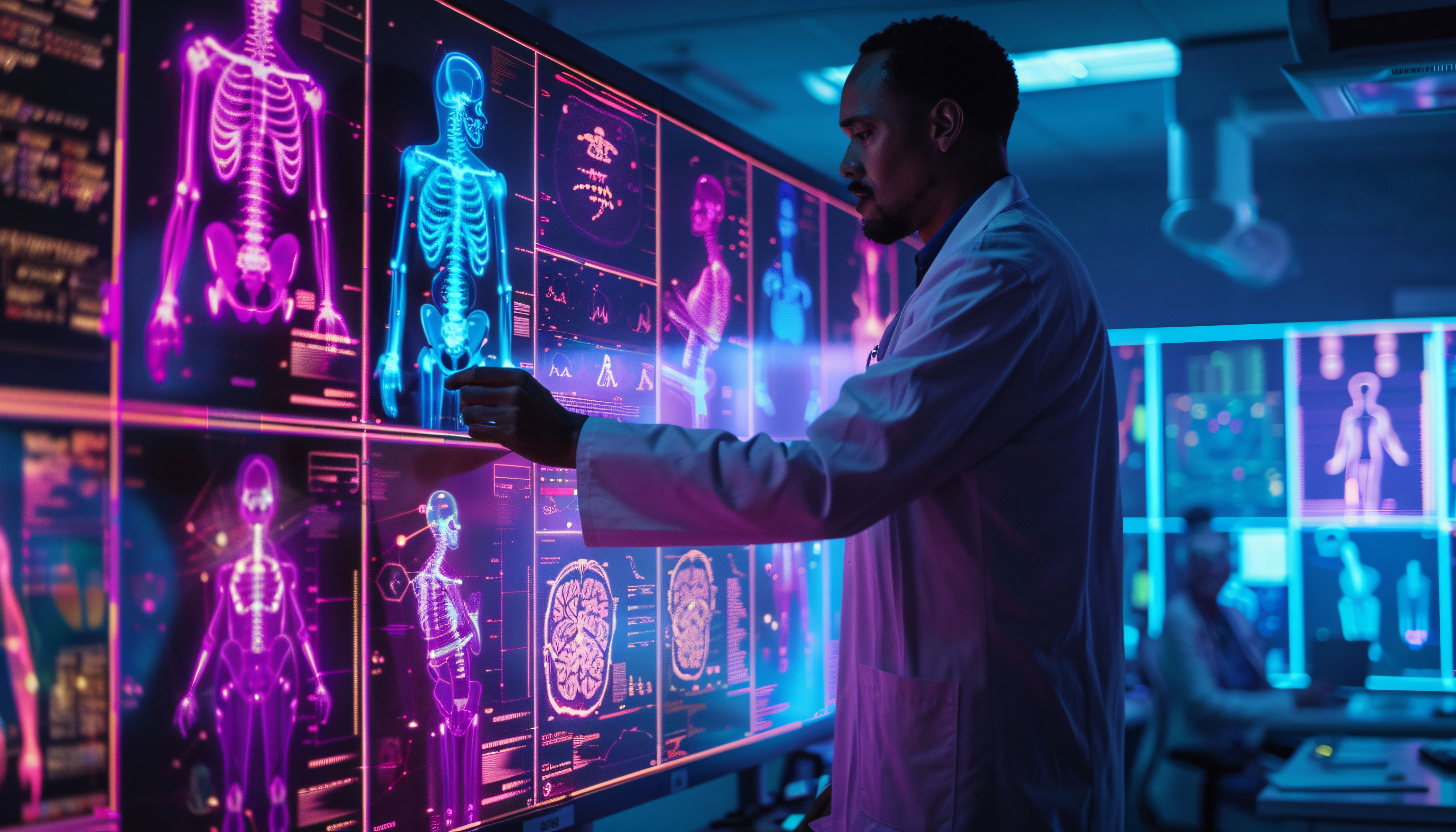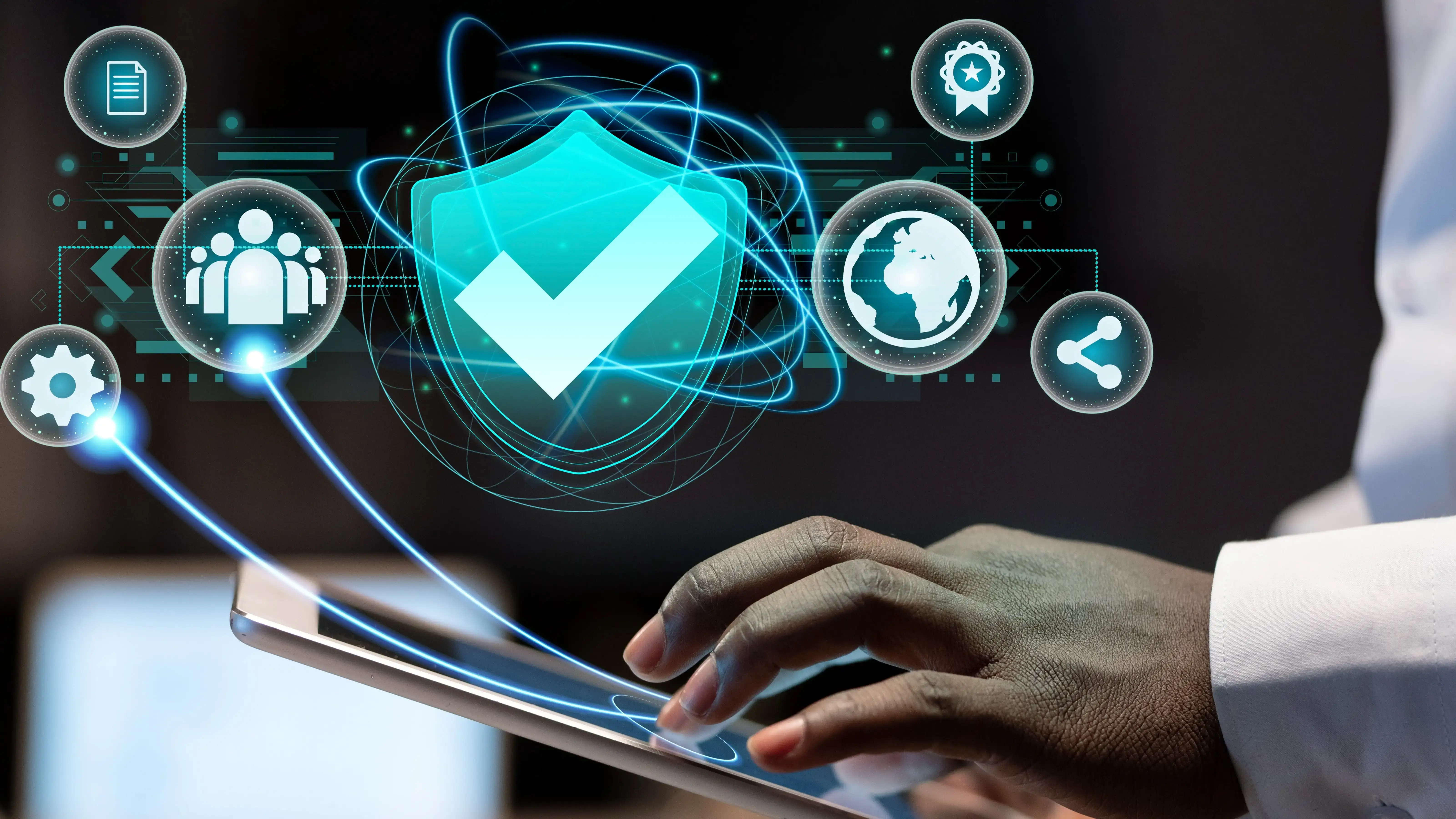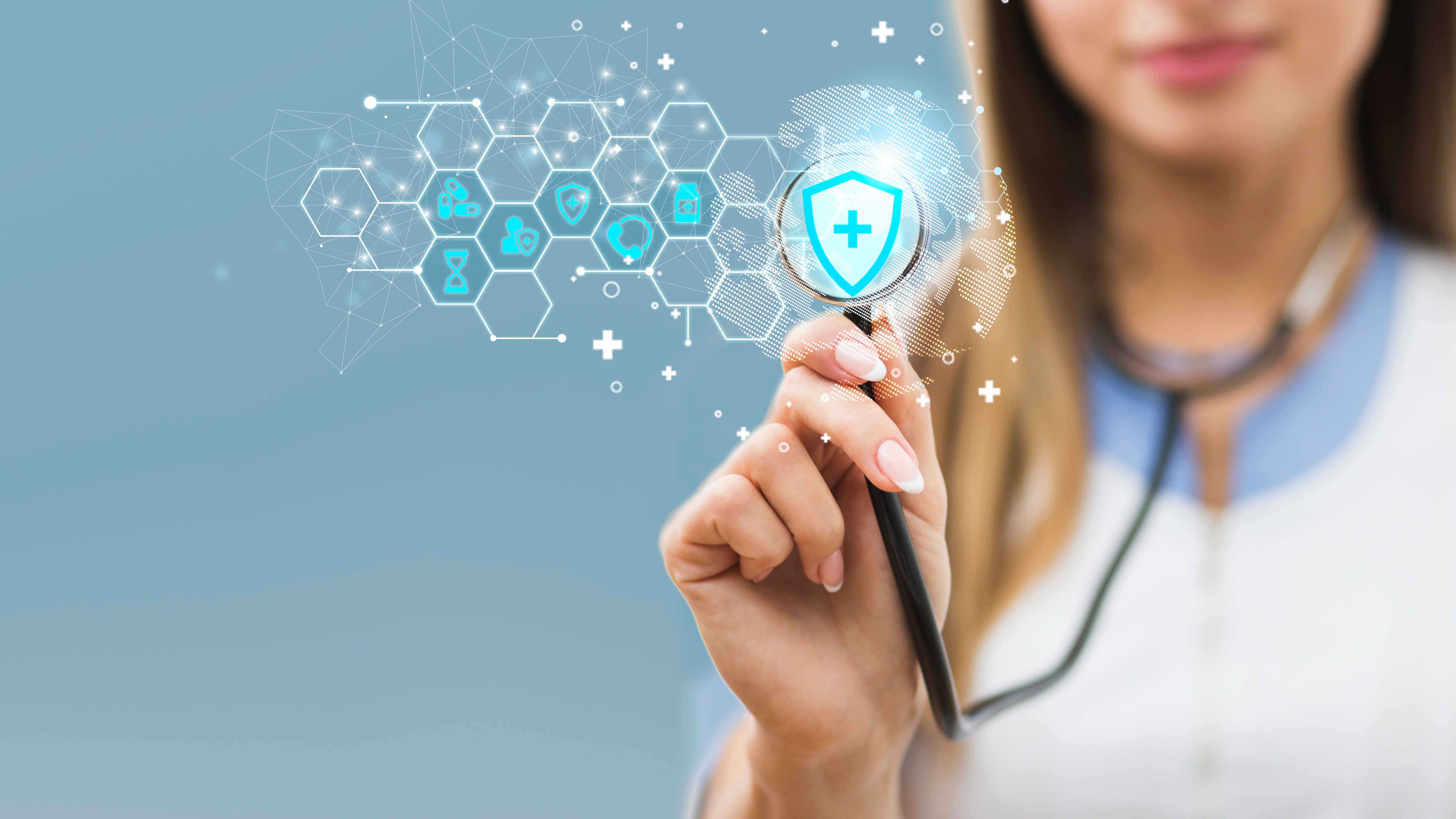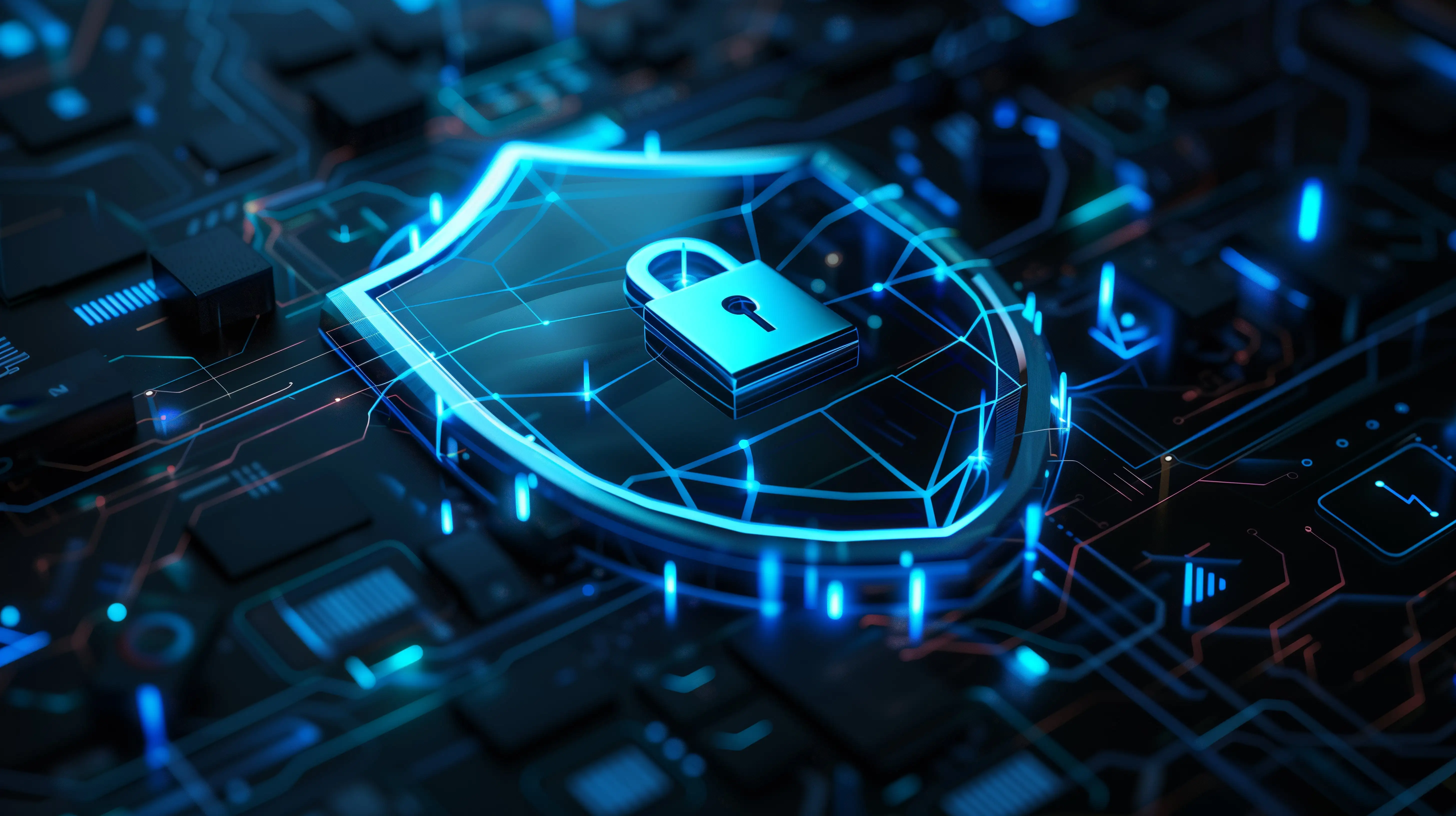Overview of the Cybersecurity Landscape in Healthcare:
Depending on digital technologies and the internet more and more, the healthcare industry is vulnerable to cyberattacks. The frequency and complexity of these attacks are growing as medical centers use new technologies to simplify processes. Regarding patient data, operational systems, and medical devices as main targets, this changing scenario poses a significant threat to public health.
Importance of Staying Updated:
Medical professionals have to keep up with the newest cybersecurity trends in healthcare to protect private patient information. Maintaining trust in healthcare services and avoiding expensive damages depend on being ahead of possible breaches as cyber threats get more complex.
1. Cybersecurity's Rising Artificial Intelligence and Machine Learning Evolution
Explanation of AI/ML in Healthcare Cybersecurity:
Artificial Intelligence (AI), and machine learning (ML), are starting to be integral in healthcare cybersecurity solutions. Using advanced algorithms to find patterns and abnormalities in vast datasets, these technologies enable systems to predict, detect, and respond to threats in real time.
Benefits for Healthcare Providers:
Healthcare providers benefit from improved threat detection, faster response times, and lower risk of cyberattacks by including artificial intelligence and machine learning in their security plans. These technologies are furthermore enabled by proactive patient data and system monitoring.
Implementation in Healthcare Systems:
Monitoring medical devices and electronic health records (EHRs) using AI-driven techniques can help to spot abnormal activity suggestive of a cybercrime. This guarantees quick identification and reduces risks to individuals' health as well as to healthcare organizations.
Future Outlook:
AI and ML will become ever more important in healthcare cybersecurity as they develop. These technologies will enable healthcare companies to keep ahead of developing cyber threats using constant improvements, therefore enabling their prevention before they arise.
2. The Growing Trend of Ransomware Attacks: Strategies for Protection
Present Ransomware Trends:
Attacks on healthcare professionals by ransomware have increased drastically. Cybercriminals demand a ransom for the release of malicious software using they lock critical healthcare data. Attacks against hospitals and clinics among other recent incidents show how advanced these threats are becoming.
Impact on Healthcare Organizations:
Attacks by ransomware seriously interrupt operations, cause delays in patient treatment, and result in financial losses. They could potentially cause damage to reputation, while healthcare companies trying to bounce back from these hostile cyber incidents.
Best Defense Practices:
Healthcare providers have to routinely backup data, create disaster recovery plans, and give staff healthcare cybersecurity training to help fight ransomware. Key important are endpoint protection, patching software weaknesses, and strengthening of network defenses.
Future Challenges:
Healthcare providers have to be alert and change their security plans as ransomware methods develop, particularly with double extortion attacks. This persistent risk asks for constant development in healthcare cybersecurity best practices.
3. Adoption of Zero Trust Architecture (ZTA) in Healthcare IT
Understanding Zero Trust Architecture:
Zero Trust Architecture (ZTA) operates on the idea of never trusting any device or user default. Every device or user trying to access healthcare systems needs verification. This approach prevents illegal access, providing more security.
Benefits for Healthcare Providers:
ZTA gives tighter control over private patient information, making it harder for attackers to get illegal access. Adopting ZTA helps healthcare professionals also guard themselves against compromised credentials and insider threats.
Application in Healthcare Systems:
Healthcare companies implementing ZTA should use least-privilege access policies, micro-segmentation of networks, and multi-factor authentication (MFA). These steps guarantee that only authorized users may view private information, therefore lowering the danger of breaches.
The ZTA Future in Healthcare:
ZTA will become the gold standard for safeguarding healthcare systems and data as healthcare cybersecurity develops. Its broad acceptance will strengthen healthcare providers' protection against ever-advanced cyberattacks.
4. More Attention to IoT and Medical Device Security
Healthcare IoT and Medical Device Vulnerabilities:
New cybersecurity concerns arise when IoT devices and medical equipment—such as pacemakers and infusion pumps—are combined in hospitals. If improperly secured, these linked devices could provide access for cybercriminals trying to take advantage of weaknesses in healthcare systems.
Impact of Cyber Threats on Medical Devices:
Notable hacks involving unprotected or outdated medical devices have targeted sensitive patient data and disrupted healthcare services.
Guidelines for Medical Device Security:
Healthcare providers should adopt healthcare cybersecurity best practices including regular upgrades, strong encryption for data transferred by devices, and rigorous network segmentation to protect devices.
IoT Security's Future in Healthcare:
Security methods designed especially for medical devices will become crucial as the healthcare sector keeps adopting IoT technologies. Healthcare organizations should rely on top healthcare cybersecurity companies for solutions to reduce these developing risks.
5. The Shift of Healthcare Towards Multi-Factor Authentication (MFA)
What is Multi-Factor Authentication (MFA)?
To access private information, multi-factor authentication (MFA) is a security technique requiring two or more verification elements—such as passwords, fingerprints, or security tokens. For companies in the healthcare sector, it provides still an additional level of security.
Why MFA is Crucial for Healthcare Providers:
MFA guarantees that only authorized staff members can access important patient information, and the importance of cybersecurity in healthcare is at an all-time high. This is essential to protect private medical records from illegal access.
Benefits of MFA in Healthcare:
MFA lowers cybersecurity risks in healthcare, as well as the possibility of illegal access. MFA greatly improves security and reduces the possibility of data leaks by requesting several kinds of authentication.
MFA Implementing Advice:
MFA can be used by healthcare professionals using hardware tokens, mobile app-based validation, or biometrics. Together with strict password regulations, these technologies provide more solid access control.
The Future of MFA in Healthcare:
Cybersecurity for healthcare will depend more on biometrics and other smart technologies for MFA going forward. These developments will offer even more robust patient data protection and access limitations.
6. Cybersecurity Education and Awareness for Healthcare Employees
Why Employee Education is Essential:
Maintaining cybersecurity in healthcare depends much on staff members. Targeting inexperienced staff members, phishing and other social engineering techniques can cause major data breaches. Reducing these dangers calls for continuous cybersecurity awareness.
Training Healthcare Workers: Best Practices
Healthcare professionals need regular cybersecurity training courses with phishing simulators among other security training. Healthcare companies can lower their risk of human error-based attacks by teaching staff members healthcare cybersecurity regulations and best practices.
Challenges in Educating Healthcare Workers:
Maintaining cybersecurity awareness among staff members can prove challenging in a busy hospital environment. Regular training courses, however, are essential to keep workers current on the latest risks and healthcare cybersecurity standards.
Cybersecurity Training's Future in Healthcare:
AI-driven training systems and health security partners are changing the way healthcare cybersecurity is taught. These tools assist medical professionals remain aware of developing cybersecurity concerns by making training more interactive.
Conclusion
Review of Major Cybersecurity Trends:
Healthcare companies have to give the security of connected devices a priority, apply multi-factor authentication (MFA), and make sure their staff members are adequately qualified for cybersecurity threats in healthcare. The protection of private patient data depends on keeping current with the newest cybersecurity advancements.
Healthcare entities should work with top healthcare cybersecurity companies and implement thorough cybersecurity policies. Visit Gini Now to get healthcare cybersecurity services, safeguarding your patient data, for strong solutions and assistance.
Looking Ahead:
Healthcare providers have to stay proactive as cybersecurity in healthcare grows. Sensitive patient data will remain safe if one partner with reliable health security partners like Gini Now and always adapts to new threats.






